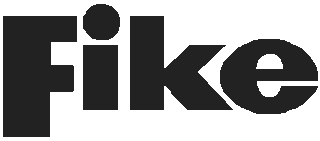There are several types of fire suppression systems. Each of them is used in particular situations. For example, kitchen systems are obviously used over kitchen ranges and broilers. Others, such as clean agent, paint booth, foam, and CO2 systems, are employed in what are called special hazard situations where water or other suppressing agents might do more harm than good.
When a fire breaks out, these systems are triggered automatically based on a temperature set by the particular needs of the environment. Proper placement and coverage of a system’s heat/smoke detectors and spray nozzles are critical to successfully extinguishing a fire. Every day, we design systems that meet or exceed the standards for each situation.
Fire Suppression System Services
We configure all our systems to match the size and volume of the property. Our designs are indoor-outdoor compatible and resistant to environmental elements. We offer consulting services to ensure each suppression system complies with codes and each project’s specific requirements. We have 24/7 operating hours for emergencies or inspections.

- Design
- Installation
- Inspection
- Maintenance
- Repair
- 24/7 Emergency Services
- Industrial Systems
- Clean Agent Systems
| System Types | Agents | Common Use | Common Manufacturers |
|---|---|---|---|
| Kitchen | Wet and chemical | Restaurant, home, cooking school, food service, cafeterias, food processing, and food trucks | Ansul, Amerex, Guardian, and Pyrochem |
| Industrial | Wet and Dry | Restaurants, homes, hospitals, and schools | Ames, Tyco, Viking, Wilkins, and ABCO Peerless |
| Sprinklers | CO2, foam, dry chemical, and Halon | Generators, turbines, flammable liquid storage, paint booths, dust collectors, and vehicle systems | |
| Clean Agent | Ecarro-25, FM-200, Inergen, and Sapphire | Computer rooms, data centers, museums, telecommunication, switch facilities, and record vaults |
When to Inspect
Fire Suppression,
Kitchen Range Hood, and
Quarterly Hood Cleaning
When to Inspect
Twice per year.
Nitrogen Flush every other inspection.
6-Year Maintenance on tank required every 6th year.
Hydrostatic Testing required on tank every 12th year.
What to Expect
The inspection will include fusible link and nozzle cap replacement, among other items, proper function of exhaust fan, adequate coverage, pull station set, and other areas of concern. A nitrogen flush will ensure piping is unobstructed.
6-Year Maintenance requires discharging the tank and refilling it.
12-Year Hydrostatic Testing requires discharging the tank and submerging it in water to test its integrity. It will be refilled if it passes the test and replaced if it does not.
Quarterly Hood Cleaning is recommended for heavily used kitchen ranges. Significant grease buildup can interfere with system readiness in between inspections
Top Fire Suppression Manufacturers





Get a Quote
When safety and security are needed, there’s no time to waste. Contact us today to get a free quote.


